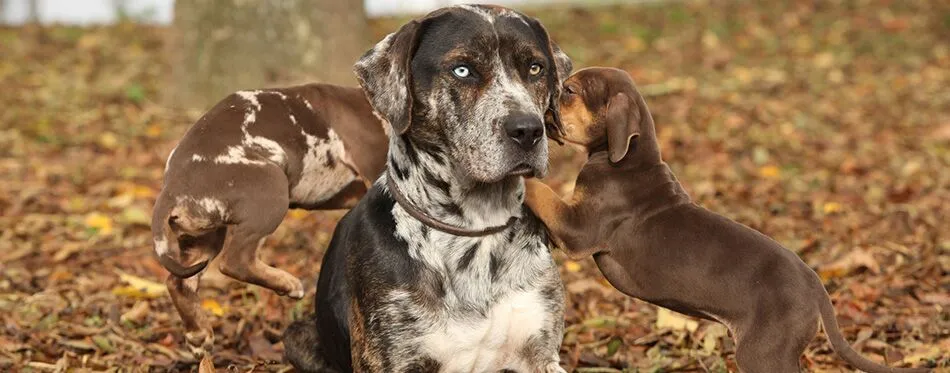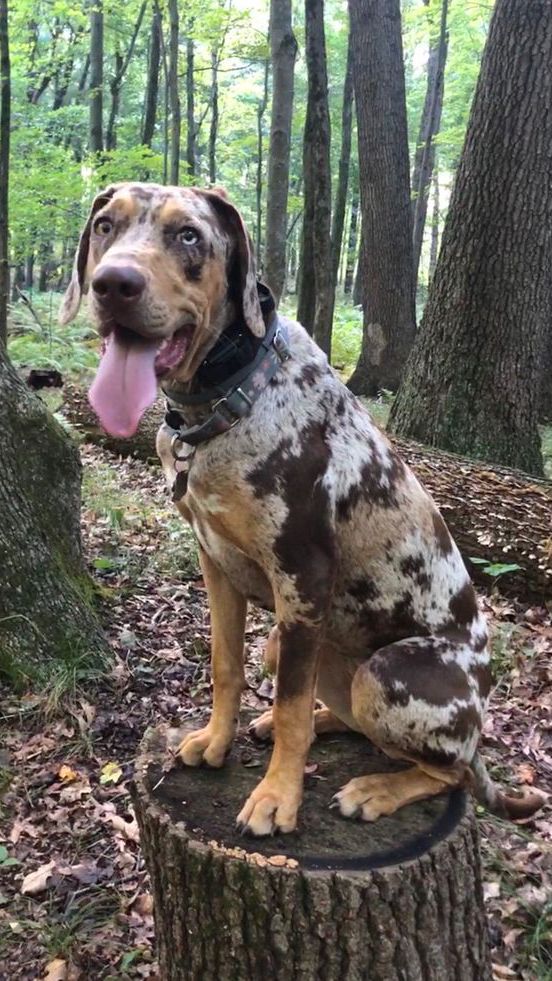Catahoula Leopard Dog Breed Information
History

The Catahoula Leopard Dog’s origins date back to the 1500s when Spanish explorers in Florida and along the Gulf Coast bred their European mastiffs, bloodhounds, and greyhounds with a domesticated, wolf-like dog kept by the Choctaw and other indigenous tribes. These early mixes were known as “wolf dogs.” When French settlers arrived in northern Louisiana near Catahoula Lake, they further refined the breed by crossing these dogs with their own hounds. Over time, this developed into the modern Catahoula Leopard Dog, which was officially recognized as Louisiana’s state dog in 1979.

Origin Story
While both the settlers and indigenous people alike appreciated this new breed’s usefulness in tracking and hunting deer, bobcats and feral hogs, it was their talent for hemming in and rounding up wild hogs and stray cattle that cemented their reputation as a working breed. Unlike other herding breeds, Catahoulas developed a unique style of creating a “canine fence” around the livestock that allows the human handler to direct the herd. When it comes to breeding, it’s their instinct, more than appearance or temperament, that makes a Catahoula.
Both the Louisiana Catahoula Cur Association and the National Association of Louisiana Catahoulas were formed in the late 1970s to track and register this breed and govern the breed standard. England’s United Kennel Club was the first national dog club to recognize this breed in 1996, classifying it as a herding breed. Currently, the American Kennel Club (AKC) doesn’t officially recognize this breed, although it has been entered as a rare breed in AKC’s Foundation Stock Service.
Because of its versatility, the Catahoula Leopard Dog has become an excellent working dog. It was mainly used for hunting and for guarding and guiding herds. Highly appreciated for its efficiency and courage, this born hunter was able to go after all types of game, from small game such as rabbits and birds to deer, bear and lynx, as well as wild pigs – hence the fact that it is also known as the Louisiana Hog Dog, since “Hog” means “pig” in English. He also excelled at tracking and rounding up wild cattle for domestic herds. He worked in groups of several individuals: the dogs would surround the herd to contain it, while their master would stand in the middle of the cattle to drive them.
